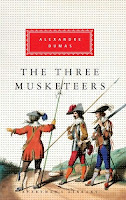By Ayn Rand
★★★★★
Five Things I Liked About
Atlas Shrugged:
1. Francisco D’Anconia
2. Brotherhood of Hugh Akston’s 3 favorite pupils
3. “Who is John Galt?”
4. Dagny Taggart
5. Disappearances of the “prime movers”
My copy of
Atlas Shrugged clocks in at 1,069 pages. It took me about 10 days to read, at a rate of approximately 100 pages a day. It is not a novel for the faint of heart, that’s for sure. It is a significant undertaking of time and mind, not something to be picked up on a whim. You kind of have to be mentally prepared for the endurance and discipline it will take to push through those thousand pages – and that’s if you like the book. I can’t imagine the willpower it would take to see the story through to the end if you weren’t enjoying it.
Happily, I enjoyed it. But during the first half, this was little consolation, as I had heard several reports of undergoing a change of heart at the halfway point. My uncle, for example, spoke of making it halfway through only to get so aggravated that he threw the book away. One of my friends also made it halfway before turning on the characters and finishing it only out of stubbornness. I didn’t experience this change of heart, however; I liked it all the way through. Well, with the exception of a certain speech made by a certain John Galt that drags on for a certain 60 pages. But other than that.
Atlas Shrugged is actually a mystery novel, you might be surprised to learn. It is a mystery novel that investigates the question “Who is John Galt?” which people have begun using as a “who knows?” substitute, without realizing they are asking a real question. The answer to “Who is John Galt?” however, is much more than one man’s identity. “Who is John Galt?” answers what happens to society when its “prime movers” (the men and women who keep society in motion) withdraw from the world; what happens when one man promises to “stop the motor of the world”; what happens when society’s leaders direct everyone to cease thinking or desiring, to sacrifice self and thought to the “collective good.”
If you read the back cover summary of
Atlas Shrugged, it’s incredibly vague, providing no real sense of what the story is about. I think that’s because the novel, at its heart, isn’t about character or plot, but about abstractions – ideas and archetypes and philosophies. But to provide a more concrete conception of what story to expect if you take on the commitment that is
Atlas Shrugged, I’ll try to sum up the basic premises of the plot. Bear with me. A thousand pages is a bit unwieldy to condense into a paragraph.
Dagny Taggart decides as a child that she will grow up to run Taggart Transcontinental, the railroad empire her grandfather founded – and she does.
Atlas Shrugged is, simply put, an epic devoted to Dagny’s struggle to preserve the integrity of the railroad that, as the single driving purpose in her life, is her life. In her efforts to save Taggart Transcontinental from ruin, Dagny must combat at every turn the directives of an unthinking government leading society into a tailspin of collective and destructive altruism, and take down the one man she holds responsible for the disintegration of industry via the unthinking apathy of society expressed in the phrase “Who is John Galt?” and the steady disappearance of industry’s main players under the influence of the ‘destroyer’: John Galt.
Even among those who enjoyed
Atlas Shrugged, general opinion seems to favor
The Fountainhead (and not just because it's shorter). Maybe it’s because I’ve read
Atlas Shrugged more recently, but I actually liked it better. I think I found the novel’s larger lens and mystery slant more engaging (and engaging is key when you’re looking at a quadruple-digit page count). There also seemed to be some more diversity in the characters, especially among the protagonists.
The Fountainhead’s protagonist – Howard Roark – was the apotheosis of Rand’s ideal man, a symbol more than a real person. His equivalent in
Atlas Shrugged, however, is not Dagny Taggart, but John Galt, who only appears in the last third or so of the book. As
Atlas Shrugged’s protagonist, Dagny is somewhat more nuanced in her personification of Rand’s philosophy. Though the essential attributes are there from the beginning, it takes the entire novel for her to become an epitomized Randian heroine, and the fact that she does not start out a perfect archetype but becomes so on a 1,000-page journey makes her more relatable, as well as making her story more interesting because it involves not just external conflict but personal.
Ayn Rand's novels are meant to establish a society-wide economic philosophy, but you can just as well take away from them an individual philosophy, a philosophy which says: "Do what
you want, because you want to; live your life on your own terms, for your own sake." That philosophy really resonates with me, and - much more than the economic theory - is why I like her novels so much.
"If you saw Atlas, the giant who holds the world on his shoulders, if you saw that he stood, blood running down his chest, his knees buckling, his arms trembling but still trying to hold the world aloft with the last of his strength, and the greater his effort the heavier the world bore down on his shoulders—what would you tell him to do?"
"To Shrug."
Books Read This Year: 49
Top 100 Progress: 44/100




